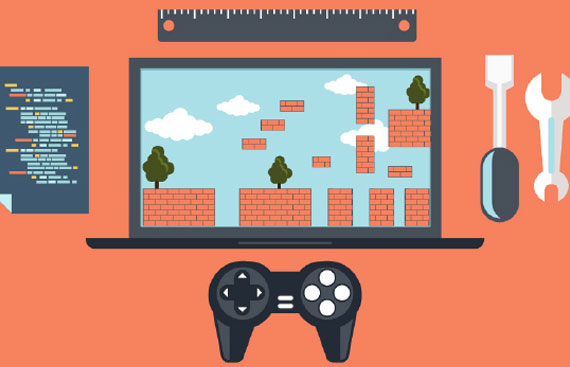Prithvi On The Role Of Design Thinking In Game Development

Gaming has perhaps existed since the beginning of human history. Dutch cultural historian Johan Huizinga saw games as the starting point for complex human activities such as language, law, war, philosophy and art. Even today, gaming is considered an integral part of pop culture. The nature of gaming, however, has evolved over the years. In the era of immersive experience, games are becoming increasingly interactive. While interactive games are ruling the modern gaming space, a lot of effort goes into the making of these games. Contrary to popular belief, game development requires a methodical approach. From the first blueprint to the commercial launch, the entire process involves extensive planning. In fact, several gaming companies have adopted the latest methodologies to build games that have highly interactive interfaces. Design thinking, for example, is one of the most effective processes that have brought in a major shift in how interactive games are produced.
What is design thinking?
As defined by Wikipedia, design thinking refers to the cognitive, strategic and practical processes by which design concepts (proposals for new products, buildings, machines, etc.) are developed by designers and/or design teams. Many of the key concepts and aspects of design thinking have been identified through studies, across different design domains, of design cognition and design activity in both laboratory and natural contexts.
Design thinking consists of five broad steps – Empathise, Define, Ideate, Prototype and Test. These steps could be either linear or non-linear depending on the company policy or other external factors. When it comes to game designing, there are often more steps involved.
Empathise
The first and foremost step is to understand the business objective and define the target audience. Once the target audience is defined, we start listing all the objectives to have a clearer view. This stage also involves the understanding of the current market trends, behavioural patterns of users and defining the success rate of various metrics.
Ideate
In this stage, the basic content idea is generated. Game designers come forward with different content ideas and some of them are shortlisted. However, the ideas should be circulated among all the stakeholders involved. Then, we focus on creating wireflows and designing user flows through Whimsical. User testing is also conducted in the ideate stage.
Visual Design
This stage is all about picking an idea and turning it into a tangible platform. The basic UI is created and various icons/illustrations are designed. After we get an interactive prototype, the testing phase begins. We select a small group of users who can give us feedback. Based on their feedback, we consider making changes to the prototype. In the visual design stage, the content is reviewed multiple times by our core team as well as stakeholders.
"Connected fitness is poised to leverage the next round of technological innovations and help to create a more fit human species"
Design handoff
At this stage, designers have finished the design and it is handed to the developers. Design handoff is a crucial stage in game development as it minimizes the guesswork and enhances the efficiency of the design process.
User acceptance testing and approval for live testing
In this stage, the product is almost ready and the entire user flow is created. We make required changes to the game’s UI, following which it is reviewed by the customer team. We then check if all the tracking metrics are added to the platform.
Measuring the feature once live
This is the stage where the effectiveness of the game is tested. We begin testing the game with a small cohort. We compare different versions of the same game to determine which one is performing better. A/B testing helps us to measure the usability, analytics and the final impact. We also weigh in customer support feedbacks to flesh out a more refined version of the game.
Up until a decade ago, the gaming sector in India was mostly dominated by foreign players. With the recent technological boom, the scenario has changed drastically. The number of home-grown companies operating in this space has grown 10-fold from 25 in 2010 to 250 in 2019. Simultaneously, the game development process has undergone huge changes. Unlike earlier, developing of interactive games is now considered a serious business, which requires several steps before the final launch.
